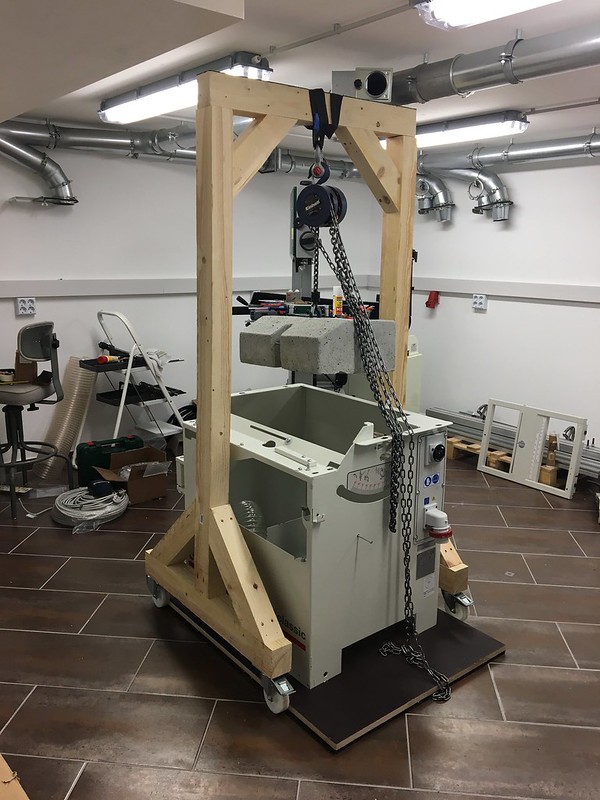I bought a Harbor Freight electric hoist and mounted it on the ceiling, screwing it to joists. Then, with a few straps, push of a button, and it lifted up quite nicely. I used that hoist so much, that when I moved, I had my electrician install 3 additional hoists in my new workshop (better quality, not HF, higher lifting capacity). Thrilled that I have them. I actually keep my heavy, large crosscut sled hanging from the hoist over the outfeed table of my ICS. When I need it, I just lower it. No manual lifting of the bulky, 50 lb crosscut sled.
Of course, installing the hoist on the ceiling is no joy, but a lot less heavy than the Sawstop contractors saw.
One thing I used for the Jet Air cleaners was to hook up chains from the ceiling hooks to the screw eye bolts on the Jet. One by one I went corner by corner and reduced the chain length one link (or a few) with caribiners. Then the other 3 chain links. Before you know it (actually it takes a while, but you don't have to go up to the ceiling), you've lifted it up.
- After I ask a stranger if I can pet their dog and they say yes, I like to respond, "I'll keep that in mind" and walk off
- It's above my pay grade. Mongo only pawn in game of life.




 Reply With Quote
Reply With Quote







